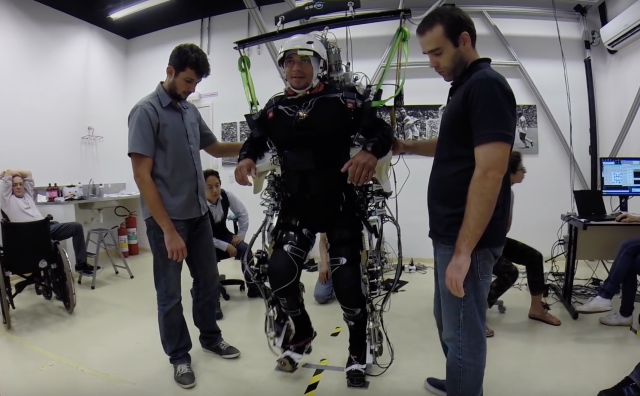Brain training with exoskeleton and VR spurs recovery for paraplegics

(credit: AASDAP and Lente Viva Filmes, Sio Paulo, Brazil)
With brain training, paraplegics can once again move and sense their limbs despite having spinal cord injuries that were previously considered irreversible, an international team of researchers reports Thursday in Scientific Reports.
After a year of working with a brain-machine interface, virtual reality, and robotic exoskeletons, eight paraplegic patients began moving and feeling their lower bodies again. Some can now even walk with assistance. Half of them were upgraded from a classification of 'complete' paralysis to incomplete. And this group has continued to train and improve, according to the lead study author, Miguel Nicolelis, of Duke University.
"Nobody ever imagined that one day we would be talking about the possibility of using brain-machine interfaces to induce partial neurological recovery in patients who have been diagnosed as having a complete spinal cord injury," Nicolelis told press during a conference call. "As you can imagine, for us this is a very important milestone."
Read 7 remaining paragraphs | Comments